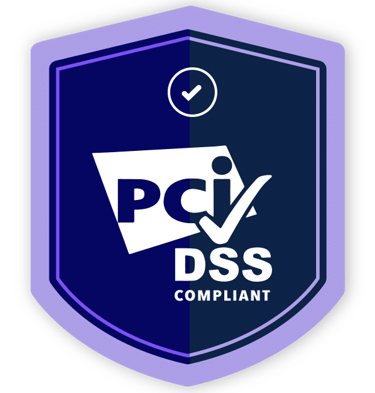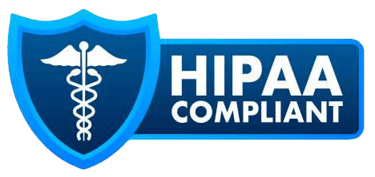PDGM Explained: Comprehensive Guide for Home Health Agency
Learn the essentials of PDGM (Patient-Driven Grouping Model), how it works, key drivers, strategies for optimization, and how to stay compliant—in a clear, actionable guide for home health agency owners.
The home health industry has experienced one of its most significant payment shifts in decades with the introduction of the Patient-Driven Groupings Model (PDGM). This payment system, implemented by the Centers for Medicare & Medicaid Services (CMS), has fundamentally changed how home health agencies are reimbursed for the care they provide.
Instead of being rewarded for the number of visits performed, agencies are now paid based on the complexity and clinical characteristics of each patient. In other words, PDGM puts the patient—not the volume of services—at the center of reimbursement.
For home health owners, understanding PDGM is crucial to financial success, compliance, and operational efficiency. This guide breaks down PDGM into simple terms, explores its components, and shares practical strategies to thrive in this new payment landscape.
What Is PDGM?
PDGM stands for Patient-Driven Groupings Model. It replaced the former Home Health Prospective Payment System (HH PPS) and was designed to reduce overutilization and encourage value-based care.
Under the old model, agencies were paid based on 60-day episodes and could increase their reimbursement by providing more therapy visits. PDGM eliminates this approach and replaces it with a 30-day payment period determined by patient condition, admission source, functional level, and comorbidities.
The purpose of PDGM is to make home health care more patient-centered and outcome-driven while reducing incentives for unnecessary services.
Key Changes Under PDGM
30-Day Payment Periods
PDGM shortens the traditional 60-day episode into two 30-day billing periods. This allows CMS to more closely track patient needs and agency performance over time.Elimination of Therapy Thresholds
Therapy visits no longer directly affect reimbursement. Instead, payment is determined by the patient’s diagnosis and clinical grouping.Focus on Patient Complexity
Agencies are rewarded for managing complex patients appropriately, with rates adjusted based on factors such as admission source and comorbidity level.More Detailed Documentation and Coding
Accurate diagnosis coding and OASIS documentation are now critical, as small errors can significantly affect payment.
The Four Building Blocks of PDGM
Every 30-day payment period is classified using four major elements. Understanding these is essential for both compliance and revenue protection.
1. Admission Source and Timing
Each payment period is categorized as:
Institutional if the patient was discharged from a hospital, inpatient rehab, or skilled nursing facility within 14 days before home health admission.
Community if the patient was admitted from home or a non-institutional setting.
Timing is then identified as:
Early, referring to the first 30-day period in a new episode.
Late, referring to any subsequent 30-day periods.
Institutional and early admissions typically yield higher reimbursement rates because they indicate higher patient acuity.
2. Clinical Grouping
Patients are grouped into one of twelve clinical categories based on their primary diagnosis. Some examples include:
Musculoskeletal rehabilitation
Wound care
Neuro/stroke rehabilitation
Behavioral health care
Medication management, teaching, and assessment (MMTA)
The clinical group must accurately represent the reason for skilled home health services. Using non-specific or incorrect diagnoses can result in underpayment or claim denials.
3. Functional Impairment Level
PDGM uses data from OASIS assessments to evaluate how much assistance a patient requires with activities of daily living. The patient is then placed into one of three categories:
Low functional impairment
Medium functional impairment
High functional impairment
Higher impairment levels typically correspond to higher payment rates because they require more skilled oversight and resource use.
4. Comorbidity Adjustment
PDGM accounts for additional diagnoses that increase patient complexity. Each 30-day period can include:
No comorbidity adjustment
Low comorbidity adjustment for one qualifying condition
High comorbidity adjustment for two or more qualifying conditions that interact or increase resource needs
Capturing and documenting these conditions accurately is vital for appropriate reimbursement.
How PDGM Payments Are Calculated
Each 30-day payment period is assigned to a specific case-mix group based on the four factors above. There are 432 possible groupings in total.
The CMS system assigns a case-mix weight to each grouping, which is multiplied by a base payment rate to calculate the reimbursement amount. Additional adjustments are then made for factors such as:
Wage index based on geographic location
Low Utilization Payment Adjustments (LUPAs) if the number of visits falls below a set threshold
Outlier payments for exceptionally costly care episodes
Since therapy volume no longer drives payment, agencies must focus on accuracy, documentation, and patient outcomes to sustain revenue.
The Impact of PDGM on Home Health Agencies
PDGM has redefined operations for home health agencies nationwide. While it rewards efficiency and clinical precision, it also introduces new challenges.
1. Documentation Pressure
Under PDGM, documentation directly influences reimbursement. Coding must align perfectly with clinical findings, and functional scoring must reflect reality. Inaccurate or inconsistent charting can lead to denials or reduced payments.
2. Financial Adjustments
Shorter billing cycles mean agencies receive payments more frequently but must manage cash flow carefully. Agencies need tighter billing processes, timely OASIS submissions, and close coordination between clinical and administrative staff.
3. Therapy Utilization Shifts
Because therapy is no longer a payment driver, many agencies have adjusted staffing models. The focus has moved from therapy visit count to outcomes, mobility improvements, and functional independence.
4. Audit and Compliance Risk
CMS and Medicare Administrative Contractors (MACs) are conducting more reviews to ensure accuracy in coding and documentation. Any inconsistency between diagnoses, plan of care, or visit notes can trigger a targeted probe or audit.
Strategies for PDGM Success
Home health owners who adapt strategically can turn PDGM into an opportunity for efficiency, accuracy, and profitability. Here are key strategies to adopt.
1. Strengthen Coding and Clinical Alignment
Ensure that your clinical documentation and ICD-10 coding tell the same story. This means:
Conducting regular internal audits
Having certified coders review OASIS documentation
Holding case conferences to align diagnosis, care plan, and treatment
A small coding discrepancy can shift a case-mix grouping, causing significant financial loss.
2. Optimize OASIS Assessments
Functional scoring should reflect the patient’s true level of independence. Avoid overestimating or underestimating abilities. Training your clinicians on OASIS accuracy will protect both reimbursement and compliance.
3. Capture All Comorbidities
Encourage clinicians to document every clinically relevant comorbidity supported by evidence in the chart. These additional diagnoses may qualify for higher reimbursement under PDGM’s comorbidity adjustment.
4. Tighten Billing Workflows
With 30-day payment cycles, agencies must minimize lag time between documentation, OASIS submission, and claim filing. Streamlined processes ensure timely cash flow and prevent denials.
5. Monitor Low Utilization Payment Adjustments (LUPAs)
Each case-mix group has a specific LUPA threshold. Falling below this threshold converts the episode from a case-rate payment to a per-visit payment, drastically reducing revenue. Monitor visit frequency closely while maintaining clinical appropriateness.
6. Invest in Education and Technology
Knowledge is key. Continuous staff education on PDGM updates, coding, and compliance should be part of agency culture. Integrate software tools that predict case-mix grouping, flag missing data, and help manage documentation errors before billing.
7. Use Data to Guide Decisions
Regularly review performance metrics such as case-mix distribution, LUPA rates, and average reimbursement per period. Data-driven insights allow you to refine operational strategies and improve profit margins.
8. Partner with a Compliance and Documentation Expert
Organizations like HealthBridge specialize in helping home health agencies navigate PDGM successfully. Their expertise in compliance audits, clinical documentation, and process optimization can help prevent costly errors and strengthen your agency’s financial health.
Common PDGM Mistakes to Avoid
Even experienced agencies make costly mistakes under PDGM. The most frequent include:
Inaccurate Primary Diagnoses: Using vague or symptom-based codes instead of specific clinical conditions.
Incomplete Comorbidity Capture: Failing to list all qualifying diagnoses supported by documentation.
Delayed Documentation: Late OASIS submission or incomplete visit notes delaying claims.
Misaligned Functional Scoring: Over- or underestimating a patient’s abilities without justification.
Ignoring CMS Updates: Missing changes in coding guidance or case-mix recalibration.
Avoiding these errors requires consistent training, internal audits, and an integrated approach between clinical, coding, and billing teams.
Future Trends Under PDGM
PDGM is continuously evolving. CMS updates case-mix weights, wage indexes, and grouping logic every year. Home health agencies should anticipate:
More Frequent Recalibrations: Payment weights and LUPA thresholds will continue to change annually.
Increased Use of Data Analytics: Agencies that analyze outcomes, costs, and documentation trends will outperform competitors.
Integration with Value-Based Care Models: PDGM prepares agencies for broader value-based payment systems focused on outcomes.
Growth of Technology and Remote Monitoring: Telehealth, remote patient monitoring, and care coordination tools are becoming vital for continuity and compliance.
Tighter Audit Environment: CMS will continue auditing claims to ensure coding accuracy and eliminate overpayments.
Agencies that stay informed and agile will not only survive but thrive under this evolving system.
How HealthBridge Can Help
For home health agencies seeking to adapt to PDGM efficiently, HealthBridge offers expert consulting and compliance support tailored to your agency’s needs. Their services help agencies:
Improve coding and documentation alignment
Conduct internal audits and PDGM compliance reviews
Train clinical teams on functional scoring and OASIS accuracy
Streamline billing workflows to prevent denials
Monitor performance metrics and identify growth opportunities
With HealthBridge’s support, agencies can confidently navigate PDGM’s complexities while staying compliant, efficient, and financially secure.
Conclusion
PDGM represents a turning point for home health care. It rewards agencies that deliver skilled, efficient, and patient-centered care—supported by precise documentation and clinical excellence.
For agency owners, success under PDGM means understanding how each patient’s condition drives reimbursement, building systems that ensure coding accuracy, and investing in training, data, and technology.
While PDGM introduces new challenges, it also offers an opportunity to elevate care quality and financial integrity. Partnering with a knowledgeable organization like HealthBridge ensures your agency remains compliant, audit-ready, and strategically positioned for long-term growth in the evolving world of home health.







